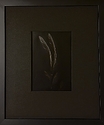TheGreatGasMaskMan
Member
Today, I found a 120 roll of tri x in a camera at my camera shop and I'll probably develop it tomorrow. the only thing is I don't know if it's tri x 400 or 320. It has a green outer backing paper, and I'll post a picture of the roll tomorrow when it's not late and I have light to work with, but anyone got any identification pointers?










